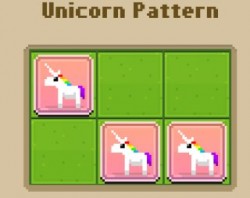


Already drained by his grandfather's building projects and constantly stressed by mismanagement, wars, and political expenses, the assets of the Medici Bank reduced seriously during the course of Lorenzo's lifetime. Lorenzo, groomed for power, assumed a leading role in the state upon the death of his father in 1469, when he was 20.
#Disco zoo patterns mars full#
His complexion was dark, and although his face was not handsome it was so full of dignity as to compel respect." īust by Verrocchio, 15th century terracotta bust, National Gallery of Art, Washington Even Lorenzo's close friend Niccolo Valori described him as homely, saying, "nature had been a stepmother to him in regards to his personal appearance, although she had acted as a loving mother in all things concocted with the mind. Giuliano, on the other hand, was regarded as handsome and a "golden boy", and was used as a model by Botticelli in his painting of Mars and Venus. Lorenzo was described as rather plain of appearance and of average height, having a broad frame and short legs, dark hair and eyes, a squashed nose, short-sighted eyes and a harsh voice. Piero sent Lorenzo on many important diplomatic missions when he was still a youth, including trips to Rome to meet the pope and other important religious and political figures. He carried a banner painted by Verrocchio, and his horse was named Morello di Vento. Niccolò Machiavelli also wrote of the occasion, perhaps sarcastically, that he won "not by way of favour, but by his own valour and skill in arms". The joust was the subject of a poem written by Luigi Pulci. In 1469, aged 20, he won first prize in a jousting tournament sponsored by the Medici. With his brother Giuliano, he participated in jousting, hawking, hunting, and horse breeding for the Palio, a horse race in Siena. Lorenzo, considered the most promising of the five children of Piero and Lucrezia, was tutored by a diplomat and bishop, Gentile de' Becchi, and the humanist philosopher Marsilio Ficino, and he was trained in Greek by John Argyropoulos. She became her son's advisor after the deaths of his father and uncle. Lorenzo's mother, Lucrezia Tornabuoni, was a writer of sonnets and a friend to poets and philosophers of the Medici Academy. Lorenzo's father, Piero di Cosimo de' Medici, was equally at the centre of Florentine civic life, chiefly as an art patron and collector, while Lorenzo's uncle, Giovanni di Cosimo de' Medici, took care of the family's business interests. As one of the wealthiest men in Europe, Cosimo spent a very large portion of his fortune on government and philanthropy, for example as a patron of the arts and financier of public works. Lorenzo's grandfather, Cosimo de' Medici, was the first member of the Medici family to lead the Republic of Florence and run the Medici Bank simultaneously. He is buried in the Medici Chapel in Florence. The Peace of Lodi of 1454 that he supported among the various Italian states collapsed with his death.

For these reasons, Lorenzo was the subject of the Pazzi conspiracy (1478), in which his brother Giuliano was assassinated. On the foreign policy front, Lorenzo manifested a clear plan to stem the territorial ambitions of Pope Sixtus IV, in the name of the balance of the Italian League of 1454. He held the balance of power within the Italic League, an alliance of states that stabilized political conditions on the Italian peninsula for decades, and his life coincided with the mature phase of the Italian Renaissance and the Golden Age of Florence. As a patron, he is best known for his sponsorship of artists such as Botticelli and Michelangelo. Also known as Lorenzo the Magnificent ( Lorenzo il Magnifico ) by contemporary Florentines, he was a magnate, diplomat, politician and patron of scholars, artists, and poets. Lorenzo di Piero de' Medici ( Italian: 1 January 1449 – 8 April 1492) was an Italian statesman, banker, de facto ruler of the Florentine Republic, and the most powerful and enthusiastic patron of Renaissance culture in Italy.


 0 kommentar(er)
0 kommentar(er)
